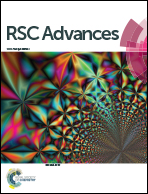Functional, rheological and sensory properties of probiotic milk chocolate produced in a ball mill
Abstract
The aim of this study was to investigate the survival of probiotics (Lactobacillus acidophilus NCFM, Lactobacillus rhamnosus HN001 and Bifidobacterium lactis HN019) in milk chocolate masses prepared at temperatures 35 °C and 40 °C. The influence of probiotics and preparation temperature on rheology, particle size distribution and sensory properties of the chocolates, was examined during 6 months of storage at 20 ± 2 °C. An inoculation temperature of 40 °C significantly improves the rheological and sensory properties of probiotic chocolate, as well as leading to the survival of L. acidophilus NCFM and L. rhamnosus HN001 strains. After 6 months of storage, the survival of these strains was above 90%, with a viable cell count of about 8.1 log(CFU g−1). An inoculation temperature of 40 °C provides higher scores of overall sensory quality (4.52–4.68), higher quality category (excellent), lower maximal viscosity (for 1.2 Pa s) of chocolates, than a temperature of 35 °C. Compared to the chocolate without probiotics, those inoculated at 40 °C achieved less increase in volume weighted mean diameter distribution (average 0.8%) than chocolates inoculated at 35 °C. Based on the results reported in this paper, seeding of the probiotics in industrial conditions can be done in the mixing tank (at 40 °C) before the phase of chocolate shaping. Addition of probiotics at this stage facilitates the manufacturing process, improves the overall quality of chocolate and preserves the probiotics as a key component of this type of product.


 Please wait while we load your content...
Please wait while we load your content...